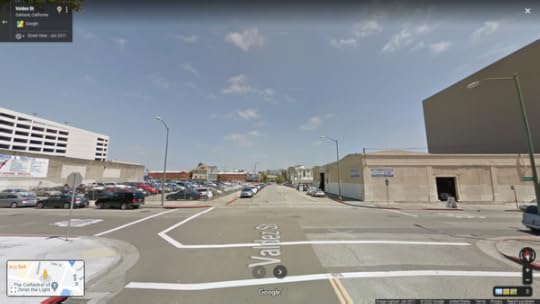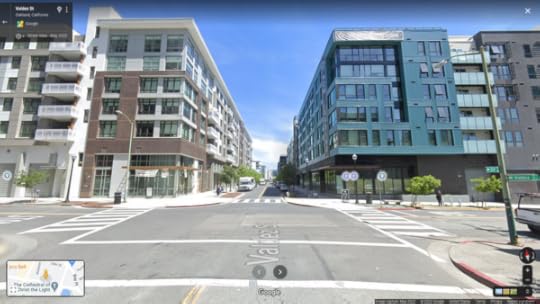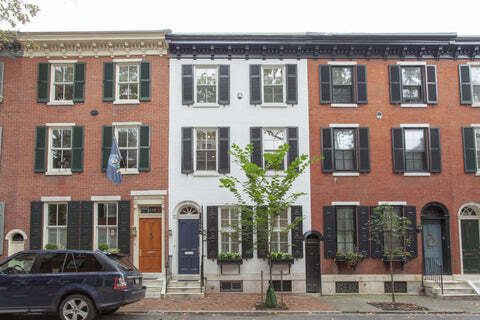Jake Berman's Blog, page 4
June 27, 2022
Let's talk about suburban decay.

One really interesting phenomenon I've seen as I've gone through the Rust Belt is that the blighted city neighborhoods are now extending into the first ring of suburbs, the types of places which were built and laid out during the wealthy years of the 1950s and 1960s. We talk a lot about urban decay as a people and as a country, but not a whole lot about suburban decay.
This shouldn't come as a surprise, in some ways. Most cities have name recognition, branding power, as marketers say. New York = banks. Los Angeles = movies. Detroit = cars. And when a big city runs into trouble, people turn heads.
OK, fine, but what does this have to do with failing suburbs?
But decaying suburbs don't have the pull of decaying cities. Detroit's bankruptcy in the early 2000s was a national scandal. (It did lead to one of the greatest commercials of all time, though.) But few people know or care about the travails of places like Highland Park, Michigan, which has collapsed every bit as much its larger, more famous neighbor. Originally, Highland Park was designed to be a tony, exclusive streetcar suburb, and was the headquarters to Chrysler; it fell apart after World War II, under the weight of white flight to the suburbs.
Pre-World War II suburbs like Highland Park have infrastructure which is impossible to maintain, given the collapsed tax base. This isn't a problem unique to pre-World War II suburbs. In fact, post-World War II suburbs are even worse, because they put fewer people onto more land, meaning that there's a lot more physical infrastructure to maintain - roads, pipes, power poles, and so on.
And there are a lot of these working-class, post-War suburbs out there, like Warren, Michigan, which came of age during the era of white flight from the urban core after World War II. Between 1940 and 1970, Warren's population increased four times, from 42,000 to 179,000; since then, it's lost a quarter of its population.
Drive around Warren today, and you'll start seeing the opening signs of decay: vacant lots, poorly paved roads, chainlink fences surrounding suburban houses, pawnbrokers. There aren't many people willing to invest in Warren, so both the housing stock and the commercial space are aging rapidly.
There's no good way out of this if you're a working-class Rust Belt suburb.
Richer suburbs, like Grosse Pointe, 25 minutes away, have enough wealth that they can maintain their existing infrastructure as is even with population loss. Grosse Pointe has lost the same percentage of its population as Warren.
In non-Rust Belt regions, there's usually enough demand that working-class communities can just build their way out of the infrastructure problem. Compare, e.g., Valdez Street in Oakland, CA in 2011...

...with the same view in 2022.

The repaved roads, the street trees, the new stoplights, bike racks, and sewer upgrades were all paid for by developers. But Metro Detroit just doesn't have that kind of demand. It's far more lucrative to build downtown, in wealthy suburbs, or at the urban periphery.
So what is there to do, then, for communities like Warren?
The first step is to realize that you have a problem, and to have a serious discussion within the community as to just what the city's long-term trajectory is. It's going to require hard choices. Youngstown, Ohio, of similar size to Warren, got to the problem late, and ended up having to engage in large-scale planned shrinkage.
Second, the community needs to identify just what Warren's strengths are. Notably for a Rust Belt suburb, there are plenty of jobs. The enormous General Motors Technical Center is located there, as is the U.S. Army's Detroit Arsenal, and Fiat Chrysler's Warren Truck Assembly plant.
Third, it requires a hard look at what would bring someone to Warren, specifically, as opposed to any of the other places a family living in Metro-Detroit would want to go. And if the answer is, "nothing in particular," that's your answer right there.
February 28, 2022
Let's talk about how the State of California is bringing the hammer down on bad local governments who won't allow more housing.

BOTTOM-LINE, UP FRONT : The State of California has issued an ultimatum to LA's local governments: reform your land use laws to allow more housing, or else we nuke your land use law this October and anything goes.
THE BACKGROUND
We're in a housing crisis because it's not legal to build enough housing in LA to meet the demand. The epicenter of the problem isn't in the encampments under the 101 - it's in leafy suburbs like South Pasadena, Manhattan Beach, and Beverly Hills, where it's been new housing has been almost totally banned in the last 50 years. Because of that, rich people priced out of South Pas move to middle-class Highland Park; middle-class people end up in working-class Boyle Heights; working-class people in Boyle Heights are shit out of luck. Welcome to gentrification.
The State's solution is, each city has to meet a quota called the Regional Housing Needs Assessment and create a legally binding plan to meet it. (The quota for greater LA is 1.3 million new homes by 2029, and the cities divided up the quota amongst themselves.) If a city's plan won't cut the mustard, and the State can veto the rezoning plans. If the State vetoes a rezoning plan, local zoning law is void. Any building is legal to build, as long as it meets the health and safety code, and it's either (i) 20% rent-controlled affordable housing, or (ii) market-rate housing at rents affordable to the middle classes. So, new residential towers in Beverly Hills? Kosher. Rowhouses in Redondo? Sure. Garden apartments in Glendale? Go for it.
FUCK AROUND AND FIND OUT
Anti-housing cities know these are the potential consequences of breaking the law, but they've been able to ignore state housing law and screw around for so long that none of them seem to have taken the consequences seriously. Because most cities' plans are bullshit, full stop. From my earlier post, a sampling of cities' rezoning plans are:
Beverly Hills: "We'll tear down a bunch of 10-story office buildings to build 5-story apartment buildings."Burbank: "It's legal to put all the new apartments near the freeway and the airport, with all the pollution and the noise, right?"Redondo Beach: "We'll evict Northrop Grumman, which is our city's single largest employer."South Pasadena: "We'll bulldoze City Hall and replace it with apartment buildings."Pasadena: "Let's put all the new housing in the redlined neighborhoods."Whittier: "Let's build a ton of new housing in wildfire zones."Pretty much the only good plan that I've seen is LA City, which made an actual effort to figure out how to build its half-million or so new units of housing that make up the quota.
BRINGING THE BIG GUNS
Because the cities' rezoning plans are so egregiously bad, there's all kinds of easy targets here for the State to open fire on. But it requires the State to keep its nerve. This only works if you don't give in to pressure from the annoying, loud minority of people who treat city council meetings as the Festivus Airing of Grievances.
At first, the State looked like it was going to chicken out. This is because of what happened with San Diego. San Diego's rezoning plans were among the first to be reviewed by the State. And, unsurprisingly, San Diego's rezoning plans were full of the same garbage we've seen for decades: lots of thoughts and prayers about building more housing, lots of unrealistic assumptions about how housing gets built, and very little concrete action. With the recall looming, Governor Newsom's people folded and they rubber-stamped San Diego's lousy rezoning plans. It was bad.
The State forfeited its biggest source of leverage and caved. It boded ill for the fate of the rest of the rezoning plans all over the state. After all, there's not too many ways that the State can force local governments to get their shit together without the State Legislature passing new laws. And, of course, it set a lousy precedent for LA. LA is full of bad-behaving cities who just don't want to build new housing. Worse, it's not just stereotypically NIMBY affluent cities like South Pasadena or Santa Monica or Beverly Hills which behave this way. Middle-class cities like Whittier also have put forth rezoning plans composed of fantastical nonsense. In fact, there was exactly one even well-done rezoning plan, and that was the one drawn up by the City of Los Angeles. I, for one, expected the worst.
I was wrong. 100% wrong.
I AM VERY BAD AT PREDICTING THE FUTURE SOMETIMES
When it came time for the State to review LA's zoning plans, I was pleasantly surprised. Because the State didn't just veto these rezoning plans. They took it one step further, and ordered that if a city's rezoning plan doesn't fix things for real, that city's zoning will be automatically voided in October of this year. And like I mentioned above, if the zoning gets voided, any new building is legal, as long as it meets the health and safety code, and it's either (i) 20% rent-controlled affordable housing, or (ii) market-rate housing affordable to the middle classes.
But the State didn't just go after the traditional NIMBY cities, like Redondo, Santa Monica, Beverly Hills and so on. They're even threatening to nuke the zoning of the city of Los Angeles. And LA City did a pretty good job of assembling a rezoning plan. (I suspect that now that the recall stupidity is over, Gov. Newsom feels no need to be cautious.)
The State is putting everyone on blast, for real. They're doing it far more aggressively than even I had hoped to see.
OKAY, FINE, BUT WHAT SHOULD A GOOD ZONING PLAN LOOK LIKE?
There's going to be a lot of bitching and moaning in LA local government about these rezoning plans, but it's not even that hard to put together a rezoning plan that allows for pleasant old-school neighborhoods. It's basically:
1. Small apartment buildings and SF-style row houses legalized everywhere.

2. Mid-sized apartment buildings near train stations.


4. Automatic approval within 60 days of anything that meets the zoning law and the building code.
5. Abolishing the mandatory parking law. (LA's current mandatory minimum parking laws require most office and apartment buildings to be 40-50% parking by square footage.)
None of this stuff is crazy talk, because it's the rezoning plan that the city of Sacramento just approved. If Sacramento can figure out how to put together a plan to build lots of new housing, there's no reason why LA can't. But if LA cities can't get their act together like Sacramento did, their zoning is going to get nuked come October.
Sometimes, you fuck around, and you find out. It couldn't happen to better people.
December 1, 2021
Please place all Christmas orders by December 15th at 5pm.
For orders to arrive by Christmas, please order before 5pm Eastern, December 15th. If you order after that, it may arrive on time, but I can't guarantee it.



